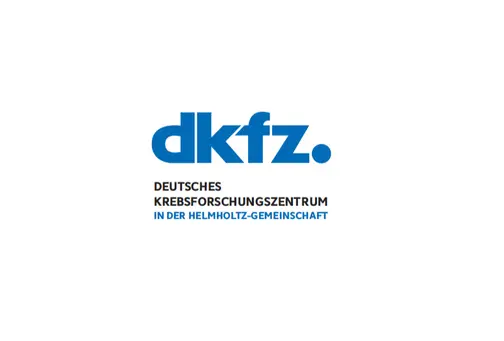Translational Research for Ion Beam Therapy

Dr. Jose Alberto Vedelago
Research Group Leader
Proton and light ion beam therapy is an advanced cancer treatment modality. By improving the potential risk quantification associated with this treatment modality, we intend to increase the number of patients who can benefit from it.

Introduction
Our research group mainly focuses on assessing the secondary radiation during proton and light ion beam therapy for cancer treatment. This is particularly relevant for pediatric and pregnant patients since the associated risks of secondary cancer are more relevant compared to other patients (Vedelago et al 2024). Our primary research partner is the Heidelberg Ion Beam Therapy Center (HIT) at the Heidelberg University Hospital (UKHD), and our main funding institutions are the German Research Foundation (DFG) as well as the Wilhelm Sander Stiftung.
The research activities we work on span from Monte Carlo simulations for characterizing secondary neutron production during ion beam therapy (Vedelago et al 2022a; Geser et al 2024) to the advancement of neutron dosimetry techniques by using Fluorescent Nuclear Track Detectors (FNTDs), with a focus on high-energy neutrons (Becker et al 2022; Schmidt et al 2024; Schmidt et al 2025). One of latest studies in collaboration with the Eurados European Radiation Dosimetry Group (EURADOS) was dedicated to compare out-of-field neutron doses (Bolzonella et al 2025). Additionally, we have reviewed the update of the International Code of Practice (TRS-398) of the International Atomic Energy Agency (IAEA) for reference dosimetry (Vedelago et al 2022b).
We also have many projects in collaboration with other groups from our department. For instance, the dosimetry for carbon ion radiotherapy in the advanced anthropomorphic phantoms developed by the Medical Engineering Group E0405 (Stengl et al 2023; Stengl et al 2025), and a joint project for gel dosimetry of carbon ions with the Applied Medical Radiation Physics Group E0402 (Bayer et al 2024). As new projects, we are starting a pilot study about using Machine Learning for neutron dosimetry with FNTDs with the Computational Patient Models Group E0401, and we intend to integrate out-of-field dose models into MatRad in collaboration with the Radiotherapy Optimization Group E0404. Furthermore, in collaboration with the Division of Biomedical Physics in Radiation Oncology, we performed the dosimetry of carbon ion mini-beams (Stengl et al 2024).
Group members
- José Vedelago (Group leader)
- Christina Stengl (Postdoc)
- Stefan Schmidt (PhD student)
- Karolin Milewski (PhD student E0402)
- Christina Mooshammer (Master student)
- Fabrizio Klassen (Master student)
- Jonas Mahnke (Master student)
- Jan Thai (Master student)
- Daniel Di Marco (Master student)
- Hannah Todte (Bachelor student)
- Paul Haney (Bachelor student)
- Jette Zacher (Bachelor student)
- Lilly Metten (Student assistant)
Collaborations
Our research extends globally through numerous collaborations at national and international levels, enabling advancements in secondary radiation dosimetry during proton and light ion beam therapy. Our collaboration partners are:
- Patrizia Kunert und Sebastian Trinkl
Federal Office for Radiation Protection (Bundesamt für Strahlenschutz; BfS), Germany. - Benjamin Lutz
Physikalisch-Technische Bundesanstalt (PTB), Germany. - Eduardo G. Yukihara
Paul Scherrer Institute (PSI), Switzerland. - Mark Akselrod
Landauer Inc., USA. - Liliana Stolarczyk and European Radiation Dosimetry Group Working Group 9 (EURADOS WG9) – Radiation dosimetry in radiotherapy.
- Luis Peralta and Joao Gentil Saraiva
Laboratório de Instrumentação e Física Experimental de Particulas (LIP), Portugal. - Marija Mayer and Željka Knežević
Ruđer Bošković Institute, Croatia. - Ariel Tarifeño-Saldivia
Institute of Corpuscular Physics (IFIC); University of Valencia - Spanish National Research Council (CSIC), Spain. Josep Martí-Climent Clínica Universidad de Navarra (CUN), Spain.
Andy Buffler
Physics Department, University of Cape Town; Metrological and Applied Sciences University Research Unit, South Africa.- Marco Silari European Organization for Nuclear Research, Genève (CERN), Switzerland.
Selected publications
- Bayer, V., Vedelago, J., Dorsch, S., Beyer, C., Brons, S., Johnen, W., Biegger, P., Weber, U., Runz, A., Karger, C. P. (2024). Carbon ion mono-energetic and spread-out Bragg peak measurements using nanocomposite Fricke gel dosimeters with LET-independent response. Radiation Measurements, 176, 107175. https://doi.org/10.1016/j.radmeas.2024.107175
- Becker, A., Jäkel, O., Vedelago, J. (2022). Intensity threshold variation method in the post-irradiation analysis of Fluorescent Nuclear Track Detectors for neutron dosimetry. Radiation Physics and Chemistry, 200, 110257. https://doi.org/10.1016/j.radphyschem.2022.110257
- Bolzonella, M., Caresana, M., Cirillo, A., Martí-Climent, J., Martínez-Francés, E., Mooshammer, C., Schmidt, S., Brons, S., Silari, M., Stengl, C., Stolarczyk, L., Vedelago, J. (2025). Out-of-field neutron radiation from clinical proton, helium, carbon and oxygen ion beams. Medical Physics, 52(6): 4924-4940. https://doi.org/10.1002/mp.17797
- Geser, F., Stabilini, A., Christensen, J. B., Muñoz, I. D., Yukihara, E. G., Jäkel, O., Vedelago, J. (2024). A Monte Carlo study on the secondary neutron generation by oxygen ion beams for radiotherapy and its comparison to lighter ions. Physics in Medicine & Biology, 69, 015027. https://doi.org/10.1088/1361-6560/ad0f45
- Schmidt, S., Stabilini, A., Thai, L.-Y. J., Yukihara, E. G., Jäkel, O., Vedelago, J. (2024). Converter thickness optimisation using Monte Carlo simulations of Fluorescent Nuclear Track Detectors for neutron dosimetry. Radiation Measurements, 173, 107097. https://doi.org/10.1016/j.radmeas.2024.107097
- Schmidt, S., Christensen, J. B., Lutz, B., Stabilini, A., Yukihara, E. G., Jäkel, O., Vedelago, J. (2025). Sensitivity analysis of fluorescent nuclear track detectors for fast and high-energy mono-energetic neutron dosimetry. Medical Physics, 52(7): e17799. https://doi.org/10.1002/mp.17799
- Stengl, C., Arbes, E., Thai, L.-Y. J., Echner, G, Vedelago, J., Jansen, J., Jäkel, O., Seco, J. (2023). Development and characterization of a versatile mini-beam collimator for pre-clinical photon beam irradiation. Medical Physics, 50(8): 5222-5237. https://doi.org/10.1088/1361-6560/ad0902
- Stengl, C., Muñoz, I. D., Arbes, E., Rauth, E., Christensen, J. B., Vedelago, J., Runz, A., Jäkel, O., Seco, J. (2024). Dosimetric study for breathing-induced motion effects in an abdominal pancreas phantom for carbon ion mini-beam radiotherapy. Medical Physics, 51(8): 5618-5631. https://doi.org/10.1002/mp.17077
- Stengl, C., Christensen, J. B., Muñoz, I. D., Neuholz, A., Brons, S., Yukihara, E. G., Liermann, J., Jäkel, O., Vedelago, J. (2025). Dose assessment in moving targets and organs at risk during carbon ion therapy for pancreatic cancer with respiratory gating. Physics and Imaging in Radiation Oncology, 34, 100775. https://doi.org/10.1016/j.phro.2025.100775
- Vedelago, J., Geser, F., Muñoz, I. D., Stabilini, A., Yukihara, E. G., Jäkel, O. (2022a). Assessment of secondary neutrons in particle therapy by Monte Carlo simulations. Physics in Medicine & Biology, 67, 015008. https://doi.org/10.1088/1361-6560/ac431b
- Vedelago, J., Karger, C. P., Jäkel, O. (2022b). A review on reference dosimetry in radiation therapy with proton and light ion beams: status and impact of new developments. Radiation Measurements, 157, 106844. https://doi.org/10.1016/j.radmeas.2022.106844
- Vedelago, J., Schmidt, S., Stengl, C., Karger, C. P., & Jäkel, O. (2024). Secondary neutrons in proton and light ion beam therapy: a review of current status, needs and potential solutions. Radiation Measurements, 176, 107214. https://doi.org/10.1016/j.radmeas.2024.107214
For a full list of articles, theses etc. from the division, see here.
Get in touch with us

